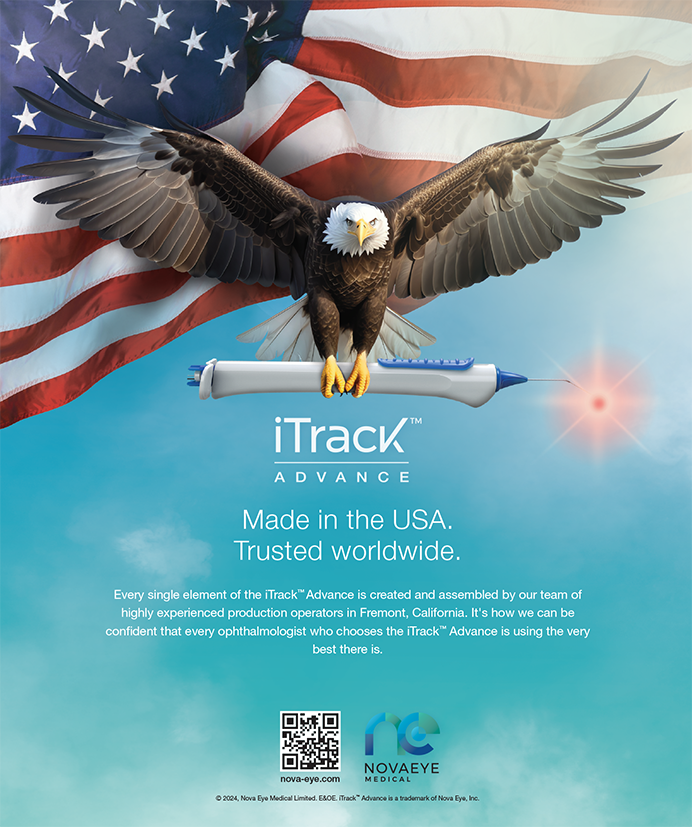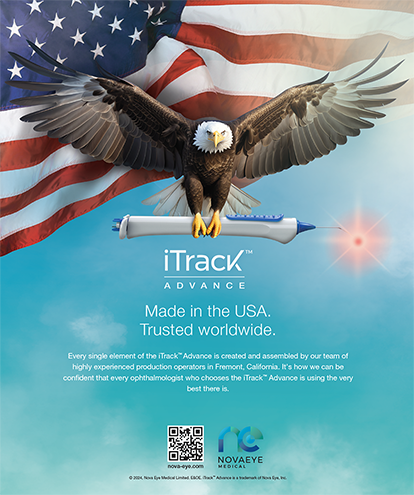Refractive surgeons realize the importance of performing preoperative topography prior to LASIK. This testing helps them to identify patients with forme fruste keratoconus, keratoconus, or pellucid marginal degeneration in order to avoid postoperative ectasia. Recently, cataract surgeons have come to appreciate that preoperative topography can help them to determine patients' candidacy for premium IOLs as well as to identify irregularities or ocular surface conditions that may affect their postoperative visual results.
WHEN TO USE CORNEAL TOPOGRAPHY
At the Center for Excellence in Eye Care, after making a diagnosis of a visually significant cataract, a number of the surgeons order corneal topography. This test is performed at no additional cost to the patient and may not be billed to insurance or Medicare due to federal regulations that prohibit billing for "screening" tests, even if they discover an abnormality. Patients are instructed not to wear contact lenses for 1 week (soft) or 2 weeks (toric or rigid gas permeable) prior to returning for corneal topography. Some surgeons suggest having patients discontinue wearing a gas permeable contact lens for 1 month for every decade of wear prior to topographic screening. Patients with significant ocular surface disease, dry eye, and/or blepharitis begin treatment with topical cyclosporine, topical azithromycin, and/or topical steroids. They are then re-evaluated 1 to 3 weeks prior to undergoing corneal topography.
UNDERSTANDING CORNEAL TOPOGRAPHY
What the Technology Reveals
The interpretation of corneal topography is an art that requires practice and a sharp eye to identify subtle signs or details. Although many excellent technologies are available for corneal imaging, we find that a standard, Placido disc topography unit (we use the Humphrey Atlas [Carl Zeiss Meditec, Inc., Dublin, CA]) is very effective for screening (Figure 1). For example, a 78-year-old patient presented for an evaluation because of blurry vision secondary to a cataract. Her corneal topography on her right eye revealed inferior steepening consistent with forme fruste keratoconus (Figure 1). The patient was informed of her condition and received a monofocal implant. Currently, she is being fit with a contact lens to address her astigmatism.
Assessing Both Eyes of Patients
When evaluating corneal topography, it is of the utmost importance to carefully examine both eyes of a patient. In 2006, a patient underwent cataract surgery and received an AcrySof IQ Restor IOL +3.0 D (Alcon Laboratories, Inc., Fort Worth, TX) in his left eye with limbal relaxing incisions to address his astigmatism. Although the eye undergoing surgery had only some mild warning signs (eg, inferior steepening and an area of flattening just below the corneal apex), the patient's right eye had a clearly abnormal topography suggestive of pellucid marginal degeneration (Figure 2).
Topography After Refractive Surgery
Corneal topography is also critical when evaluating patients who have undergone refractive surgery such as RK, PRK, or LASIK. The first step is to determine whether the corneal contour is regular or abnormal. After RK, it is not uncommon to see some corneal irregularity. For example, a patient who underwent RK in the early 1990s had irregularity that would affect his BCVA after cataract surgery (Figure 3). Identifying this situation and discussing the preexisting condition with the patient prior to surgery was important for managing his expectations even with monofocal implants. Conversely, another patient underwent LASIK in 2001 and was pleased with his quality of vision until he developed cataracts (Figure 4). He received a Tecnis Multifocal lens (Abbott Medical Optics Inc.) in his right eye and an AcrySof IQ Restor IOL +3.0 D in his left eye. Topography revealed a well-centered ablation with a symmetrical corneal shape. As expected, the patient was very pleased with his vision with the multifocal IOLs.
ADDITIONAL USES
Other conditions that are readily detected by Placido disc corneal topography include dry eye, blepharitis, and basement membrane dystrophy. Any loss of color information suggests a surface irregularity. The slit-lamp examination should alert the practitioner to these underlying conditions, but the impact on the visual pathway is clearly visible on corneal topography. For example, a patient underwent cataract surgery and received a Crystalens (Bausch & Lomb, Rochester, NY), but her postoperative vision was poor (BCVA = 20/40). The slit-lamp examination was consistent with epithelial basement membrane dystrophy, and the patient underwent a phototherapeutic keratectomy to smooth the corneal surface about 4 months after cataract surgery. The patient reported improved vision following phototherapeutic keratectomy, but clearly, evaluating the topography preoperatively helps to alert surgeons to such conditions (Figures 5 and 6).
CONCLUSION
Incorporating topography as a routine screening test prior to cataract surgery can help identify patients who are appropriate candidates for presbyopia-correcting IOLs. Even patients who will receive a monofocal implant can greatly benefit from this testing.
Lisa M. Nijm, MD, JD, is a specialist in cornea, external disease, and refractive surgery at North Bay Eye Associates in Sonoma County, California. She acknowledged no financial interest in any products or companies mentioned herein. Dr. Nijm may be reached at (707) 762-3573; lnijm77@siumed.edu.
William B. Trattler, MD, is the director of cornea at the Center for Excellence in Eye Care in Miami. He has received funding for research, consulting, and/or speaking from Abbott Medical Optics Inc. and Allergan, Inc. Dr. Trattler may be reached at (305) 598-2020; wtrattler@earthlink.net.


